The images below (background cleaned) are taken from the multi-volume natural history work, 'Getreue Abbildungen Naturhistorischer Gegenstände' (1795-1807), by Johann Matthäus Bechstein.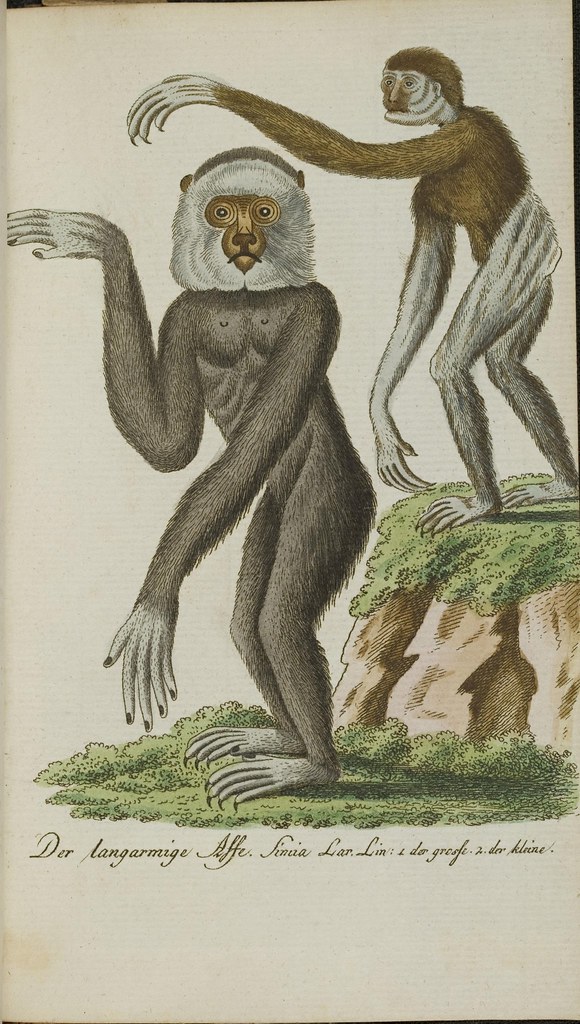
Gibbon

Common (!?) Marmoset (Simia jacchus Linnaeus)
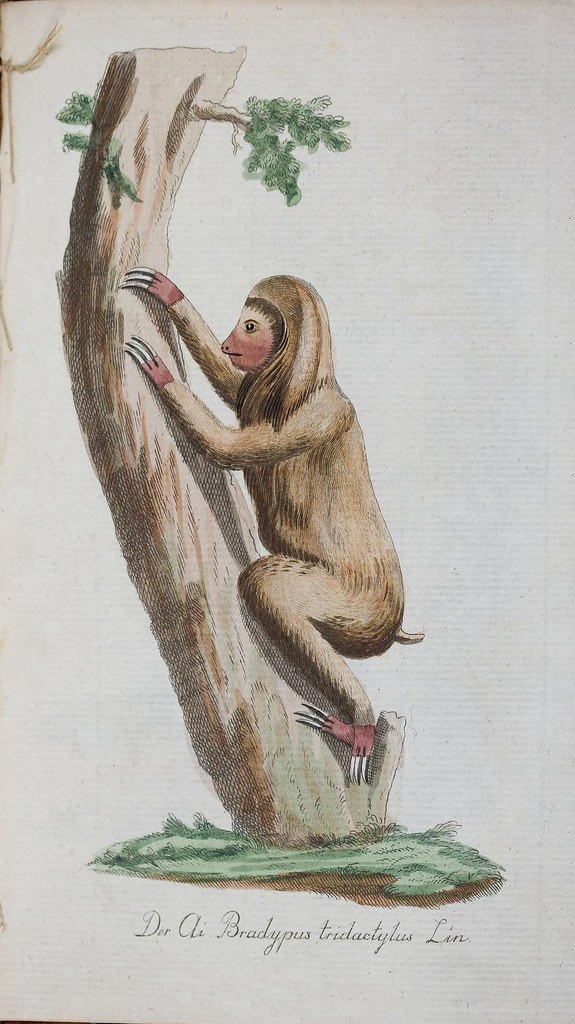
Three-Toed Sloth (nb.)
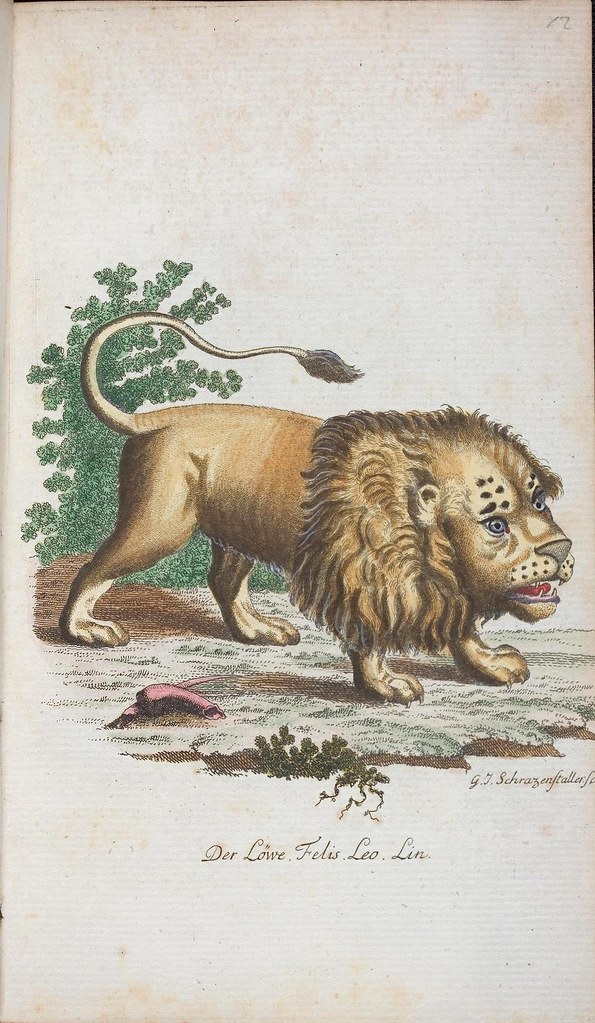
Lion
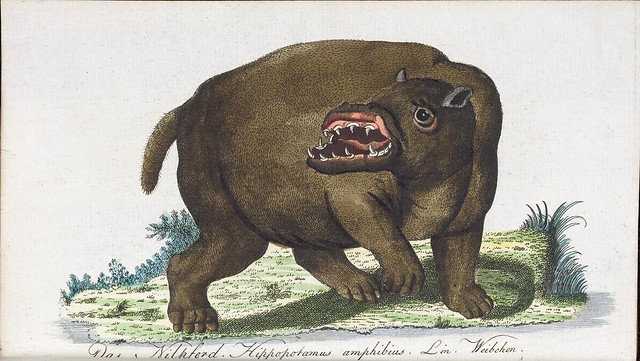
Hippopotamus
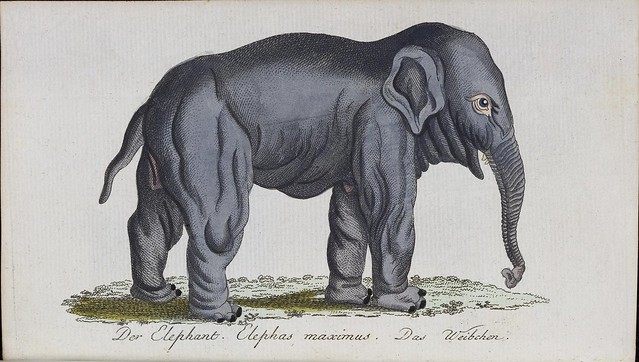
Elephant

Rhinoceros
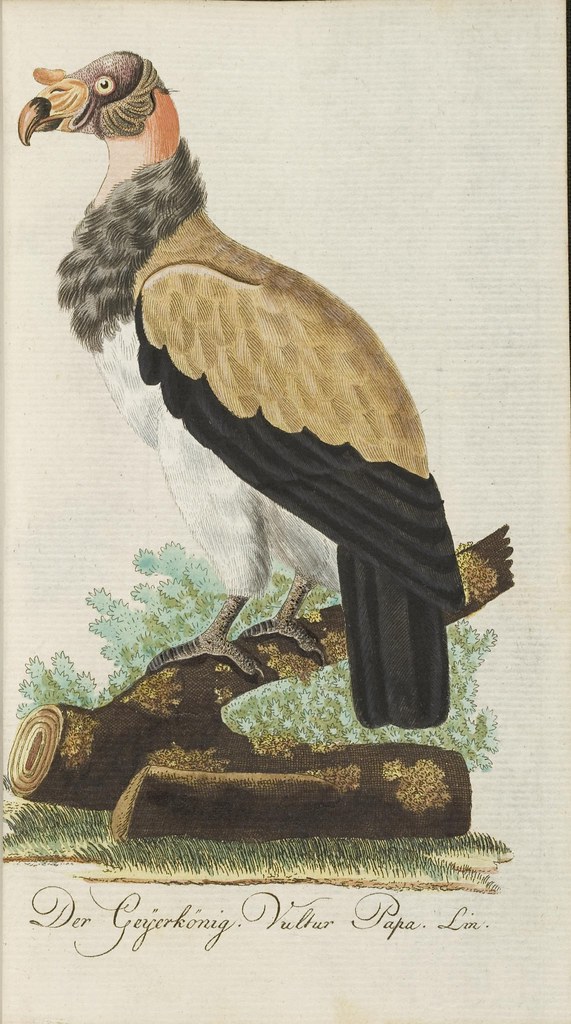
Vulture
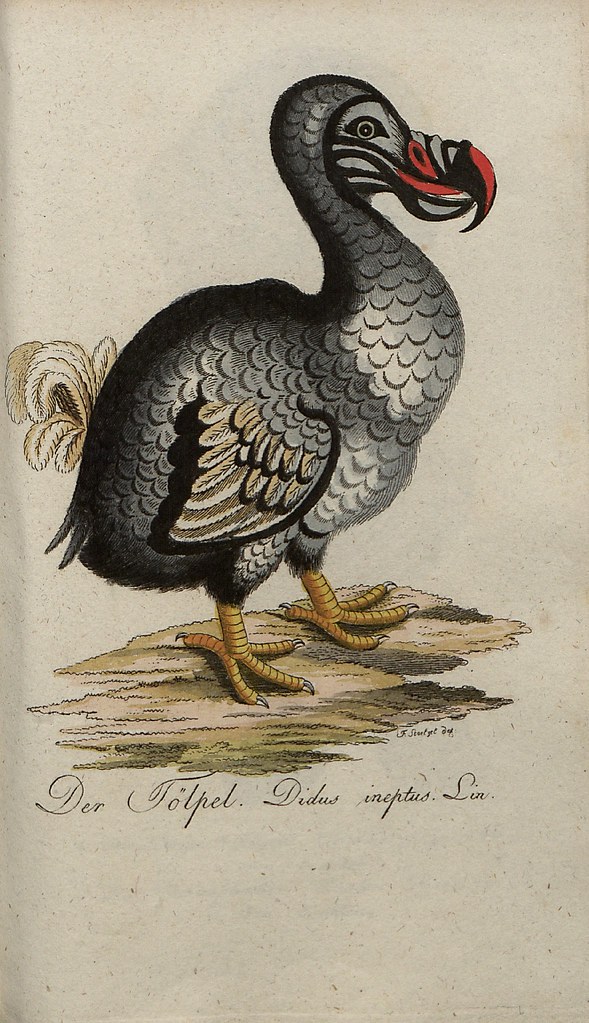
Dodo (extinct by 1681*)
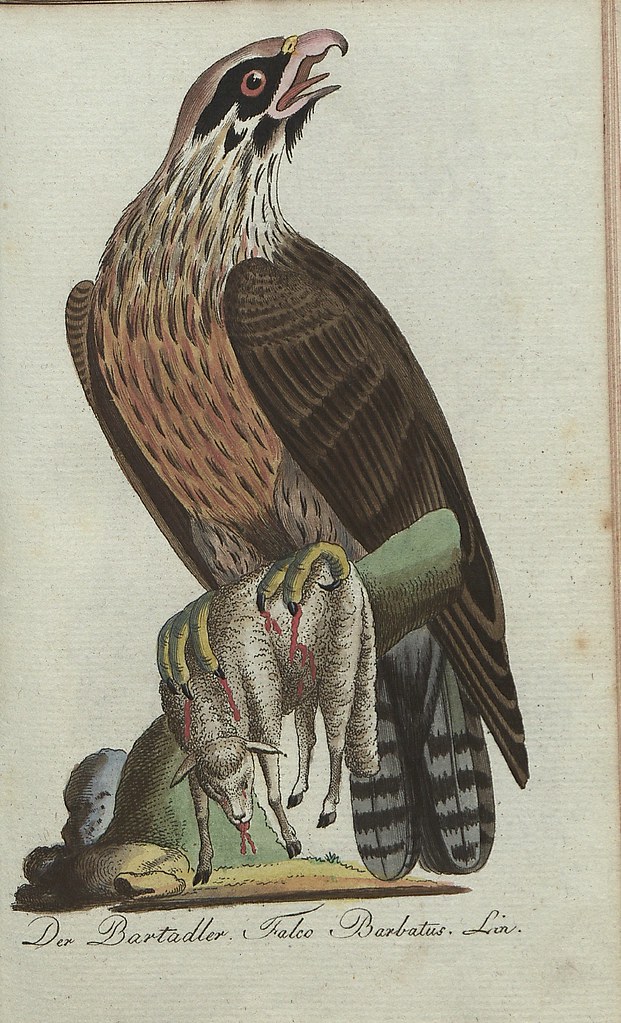
Barbary Falcon
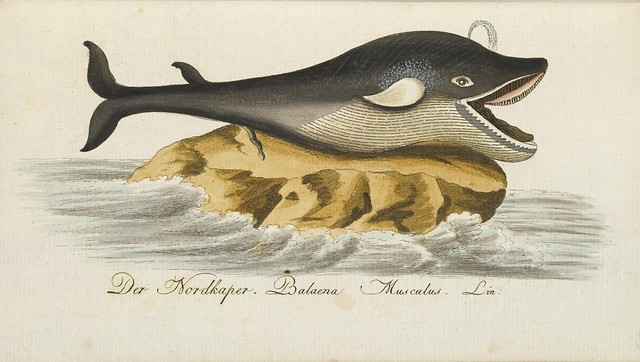
Blue Whale
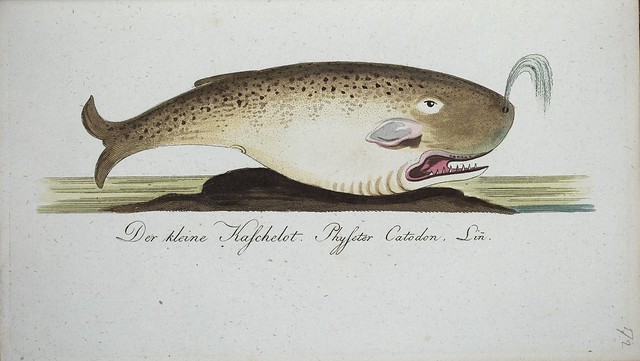
Sperm Whale
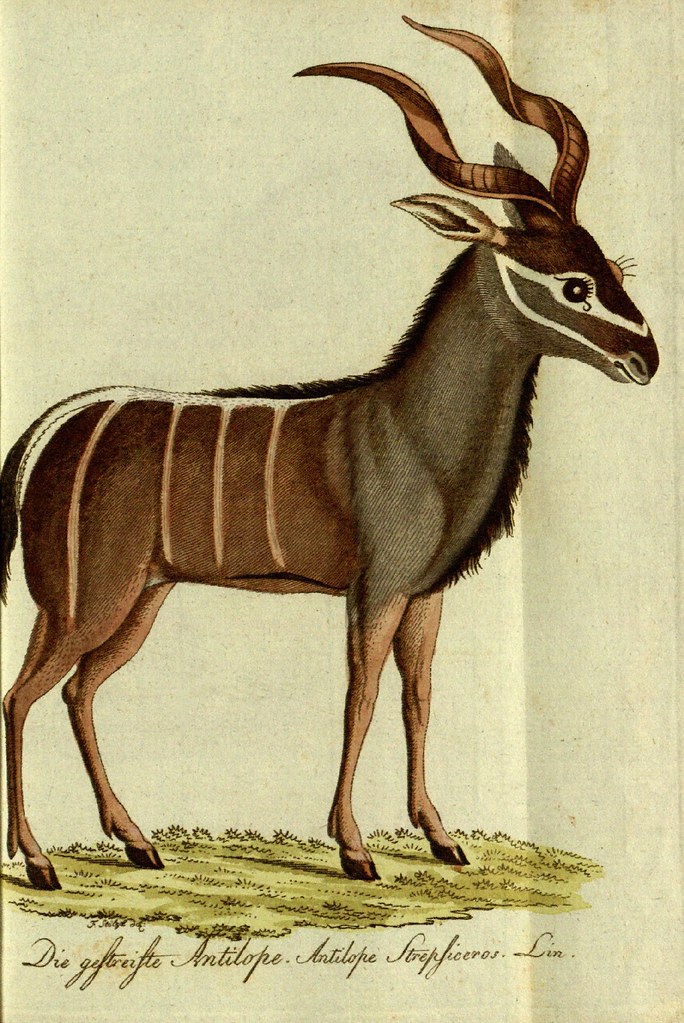
Antelope

Tapir

Squirrel
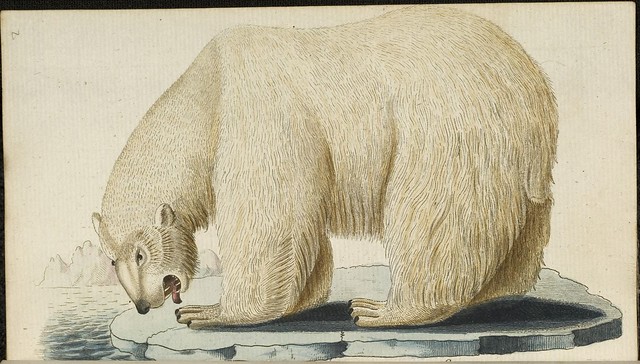
Polar Bear
I originally found this fabulous polar bear image from the Bechstein volumes a couple of years ago and chose at the time not to pursue the series. I felt that, although there was a BibliOdysseyesque diversity of material (in terms of artistic merit and style, absurdity, and range of species types), the illustrations had been largely stolen or adapted from earlier works (Buffon & Von Schreber come immediately to mind).
With the passage of time and the random rediscovery of the series website, I've had something of a change of heart. Repeated appearance of some of the illustrations (both in contemporary publishing terms and on this blog) underlines the importance and relative ubiquity of the contrived sketch settings, human-like emotions and absurdly humorous representations of some of the less familiar species in Early Modern natural history literature.
In fact, after skipping through the multiple volumes of similar material that constitute Bechstein's zoological encyclopaedia, the appearance of the anatomically correct and detailed renders among the more bizarre illustrations can feel the more incongruous finds. It's a snapshot reminder of progress in popular scientific reporting and accuracy.
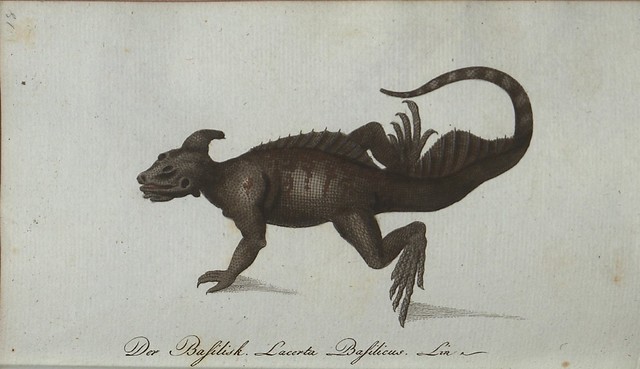
Basilisk (mythological)
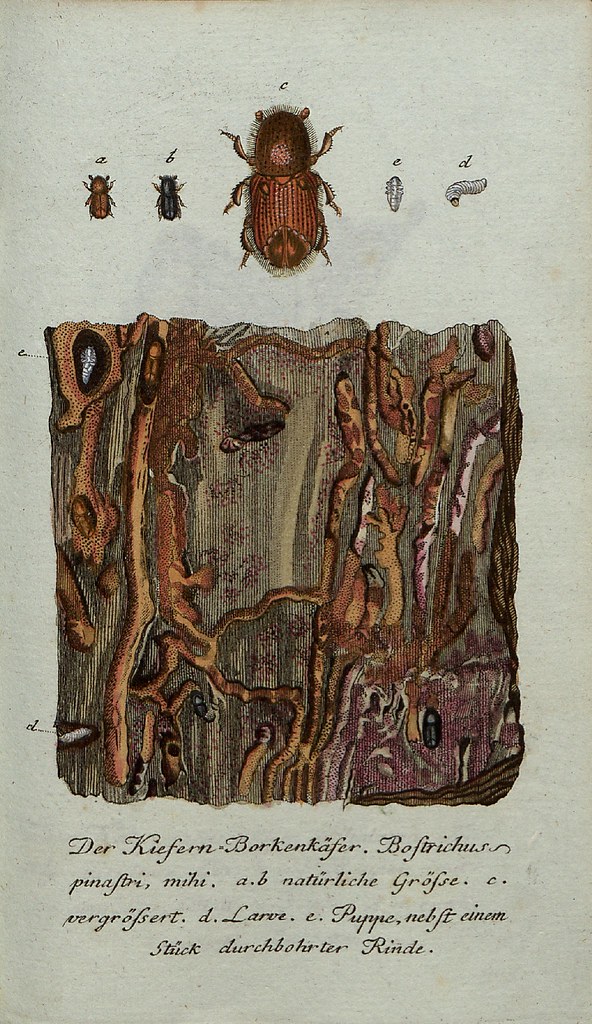
Wood Boring Beetle
Johann Matthäus Bechstein (1757-1822) was a German ornithologist and forestry expert and a pioneer in animal and environmental conservation.
After studying and teaching theology, Bechstein's casual interest in natural history was formalised professionally with the founding in the 1790s of a forestry school and a forestry society in the German state of Thuringia.
Bechstein was a prolific author - if only a modest figure in the history of science - and is probably best remembered in the English-speaking world for his series on singing birds. He also provided the first description of several bird species, wrote a monograph on caged bird diseases and advocated for preservation of animals considered to be pests in his day (bats, for instance).
- The 8-volume series by Johann Bechstein, 'Getreue Abbildungen Naturhistorischer Gegenstände' (Realistic Pictures from Natural History), was issued between 1795 and 1807. Seven of those volumes are available from the Ruprecht-Karls-Universität Heidelberg. (click through on a volume - band - then on anything below 'Inhalt', and then on 'Vorschau' for thumbnail pages. Easypeasy.)
- Bechstein books: Amazon | German National Library | Biodiversity Heritage Library | Googlebooks.
- Wikipedia bio.
- Previously: science | fauna.
- BibliOdyssey on Twitter.



























































8 comments :
Wow.
I especially love the wood boring beetle -- thanks for gathering all this goodness!
I was happy to click through and discover even more (how could there be so many!) smiling and frowning (and whatever that hippo is doing) animals -- you'd think there could only be one happy whale, for instance. Scientific anthropomorphic folk art at its most hilarious and wonderful.
This guy is chillin.
Did you ever consider to post not-naturalia items again? Greetings from
http://archivalia.tumblr.com/
Well kg, on the front page right now we have: a children's book, an Early Modern technical machine book, a bird book and a weird animal book. I would say that 2 natural history posts in a row doesn't make a trend!
I don't think too much about the 'type' of post to make. What appears on BibliOdyssey on a day to day and week to week basis is decided more by luck (75%) than by design (25%).
Hello peacay,
Your blog is great and I read it often to see what new wonders you have to show us. As I'am interested in animal life I had a closer look at the Bechstein blog.
I can give you the correct names for some of the animals.
The basilisk is (here) not the mythical but the real one: Common Basilisk (Basiliscus basiliscus).
The 'Bardadler; Falco barbatus' is not a Barbary falcon, (Bard, Barbarus means beard(ed)) but the Lammergeier, Lammergeyer, or Bearded Vulture, Gypaetus barbatus.
The squirrel is the grizzled giant squirrel (Ratufa macroura) of Sri Lanka.
The Antelope is the Greater Kudu (Tragelaphus strepsiceros).
The vulture is the King Vulture (Sarcoramphus papa) from Latin America.
The common marmoset is (Callithrix jacchus).
The gibbon is the lar gibbon (Hylobates lar).
Most of these ancient Linnaeus names you can find in Wikipedia: http://en.wikipedia.org/wiki/10th_edition_of_Systema_Naturae#Aves
On that page you'll find the links to the mammalia, aves, etc (ie. Mammalia in the 10th edition of Systema Naturae; etc).
Thanks a lot for all these great blogs you offer us.
Luc (Belgium)
Actually, the German description "Nordkaper" points to a Northern Right Whale, but the Latin does say Blue Whale. Looks like our illustrator was a tad confused there.
Thanks. I'll have to re-visit this when I get time. I thought I was fairly diligent with googling to get the species names. Oh well.
Beautiful, but I think I might have nightmares about that human-faced marmoset.
Post a Comment
Comments are all moderated so don't waste your time spamming: they will never show up.
If you include ANY links that aren't pertinent to the blog post or discussion they will be deleted and a rash will break out in your underwear.
Also: please play the ball and not the person.
Note: only a member of this blog may post a comment.